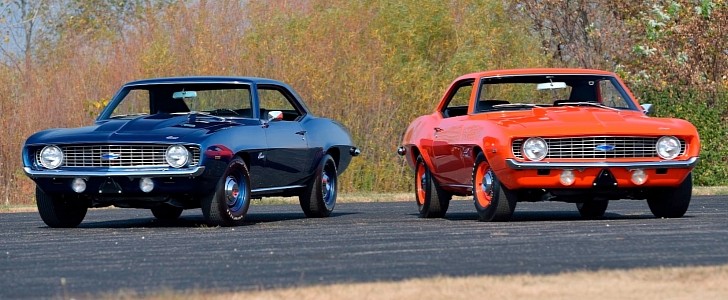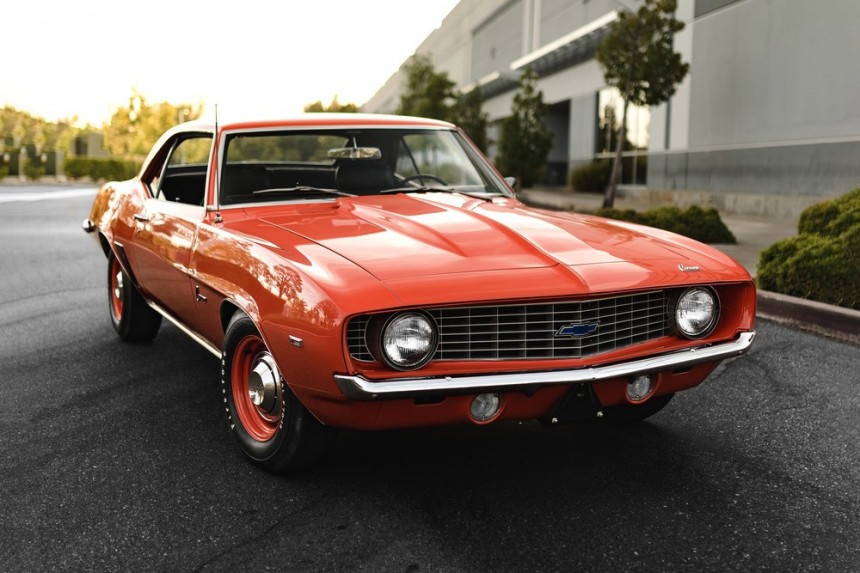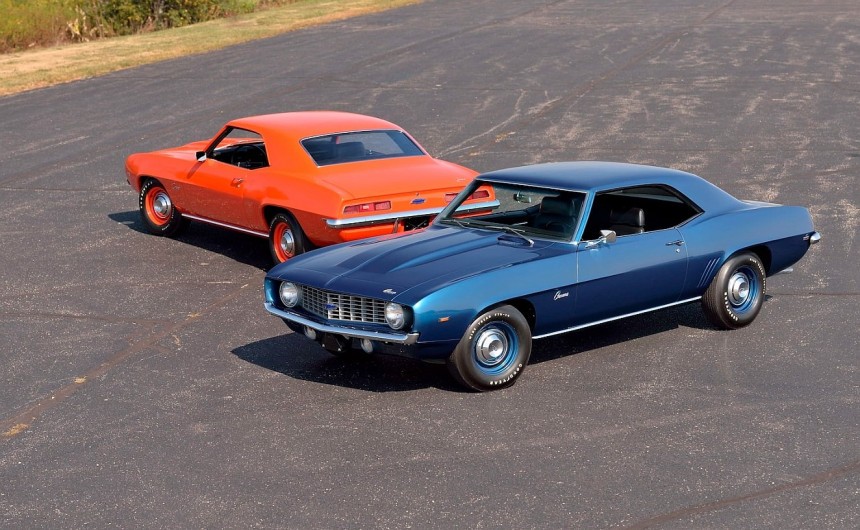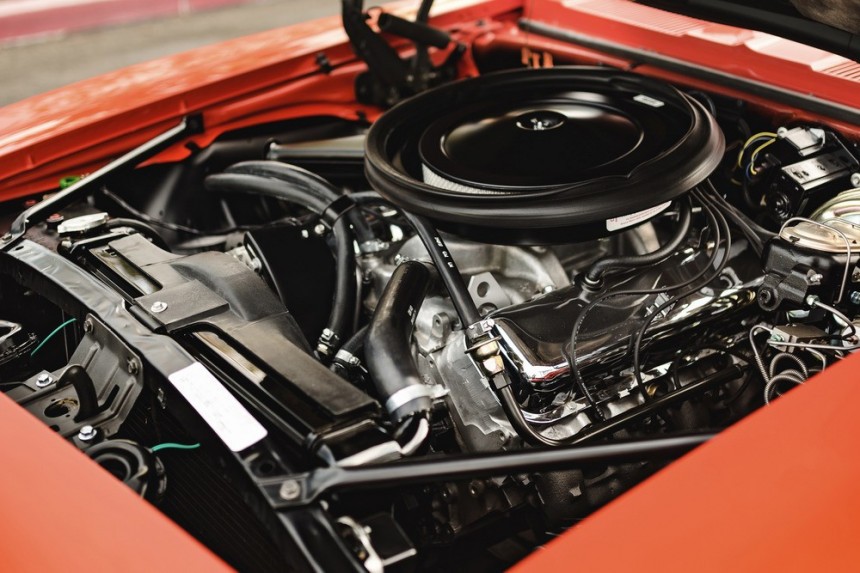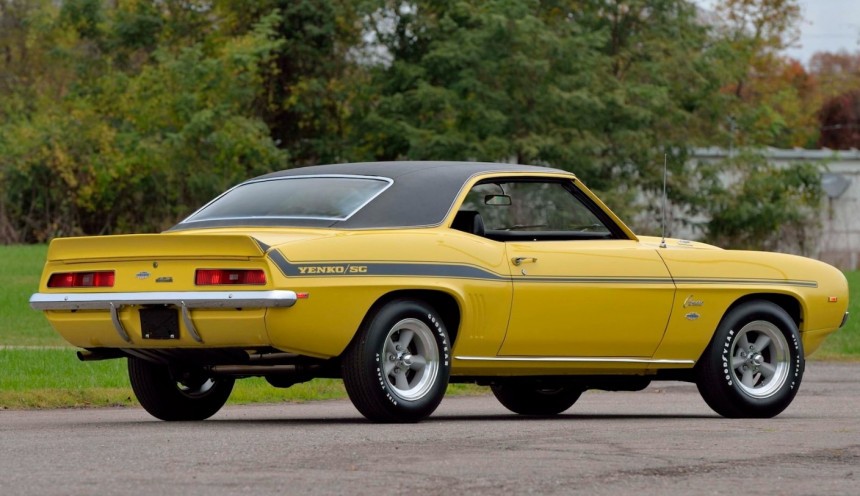Like any muscle car from the golden era, the Chevrolet Camaro has spawned a long list of limited-edition models. But none of them are as iconic and desirable as the COPO Camaro, which came to be in an era when Chevrolet wasn't allowed to offer factory support to drag racers.
Born in 1969, the COPO Camaro was pretty much the result of two Chevrolet dealers' efforts to find a way around a GM corporate edict that forbade the "bowtie" division from installing engines larger than 400 cubic inches (6.6 liters) in midsize and small cars (except the Corvette).
The ban had its roots in the late 1950s when a gentleman's agreement penned by the Automobile Manufacturers Association (AMA) forced Detroit automakers to refrain from openly endorsing corporate racing activity.
However, when both Ford and Chrysler withdrew from the AMA Resolution in 1962, General Motors decided that its division would cease all race programs and discontinue over-the-counter performance packages.
The sudden and unusual move left Pontiac without the race-winning 421-cubic-inch (6.9-liter) Super Duty V8, while many Chevrolets were no longer available with the 427-cubic-inch (7.0-liter) big-block mill. Fortunately, the decision did not stop dealers from experimenting with non-factory drivetrain layouts.
Introduced in 1967, the Chevrolet Camaro was available with a 396-cubic-inch (6.6-liter) V8 capable of up to 375 horsepower and 415 pound-feet (563 Nm) of twist. But that wasn't enough for Don Yenko, who began selling SS 396 cars with Corvette-sourced, 427-cubic-inch L72 V8 engines.
Good for a whopping 425 horsepower and 460 pound-feet (642 Nm) of torque, the L72 turned the Camaro into a formidable drag strip weapon. As soon as word got out, demand for Yenko-prepped Camaros exceeded supply. Unable to keep up with orders, Yenko called Chevrolet to order 201 427-equipped Camaros.
But Don wasn't alone in this. An Illinois dealer named Fred Gibbs also approached Chevrolet for a similar package, requesting 50 cars.
Gibbs wanted a drag-ready Camaro that customers would be able to take to the strip without further modifications and his order was the minimum production requirement for NHRA Super Stock and Stock Eliminator homologation.
With two dealers at its door, Chevrolet gave in and used its Central Office Production Orders (COPO) system, usually reserved for fleet vehicles, to work around GM's ban to drop engines larger than 400 cubic inches in the Camaro. The Yenko cars were created as COPO 9561, while Gibbs' order became COPO 9560.
While both cars were essentially 427-powered Camaros, they were notably different under the hood. Yenko's COPO 427 was nothing more than a Camaro fitted with the solid-lifter L72 V8 sourced from the Chevrolet Corvette.
While Yenko ordered only 201 examples, Chevrolet eventually made about 1,000 of them, as other dealers became aware of COPO 9561 and ordered their own cars.
The Fred Gibbs package, which was conceived by drag racer Dick Harrell, included a significantly different engine. While also displacing 427 cubic inches, the engine in COPO 9560 was an all-aluminum mill created specifically for drag racing.
Good for 430 horsepower and 450 pound-feet (610 Nm), the powerplant known as ZL-1 needed 16 hours to be built by hand and, as a result, it was incredibly expensive. At more than $4,000 a pop, it cost more than a Chevy Camaro with the base V8 engine. Consequently, the COPO ZL-1 wasn't exactly popular with racers.
Gibbs eventually ordered 69 cars, but the story goes that he only managed to sell 13 of them, with the remaining units sent to different dealers across the United States.
Both COPO cars performed well at the drag strip and went on to become the most iconic Camaros of their time. However, the COPO's success did not convince GM to lift the displacement ban, so the second-generation Camaro didn't get the 427 V8.
The COPO Camaro gained such notoriety that Chevrolet eventually decided to revive both nameplates. The COPO returned in 2012 as a drag-spec race car.
Available with a variety of V8 engines in both naturally aspirated and supercharged forms, the modern COPO Camaro brought Chevrolet even more drag strip glory against stiff competition from Ford and Dodge.
The "ZL1" badge also made a comeback in 2012. But unlike the COPO, it arrived as a range-topping, supercharged, street-legal version of the fifth-generation Camaro.
Come 2022 and both 1969 COPOS are sought-after classics. A well-documented COPO 9561 in Excellent condition can fetch more than $200,000. Being the rarer of the two, the COPO 9560 ZL-1 is much more expensive, with pristine examples valued at more than $1 million.
The ban had its roots in the late 1950s when a gentleman's agreement penned by the Automobile Manufacturers Association (AMA) forced Detroit automakers to refrain from openly endorsing corporate racing activity.
However, when both Ford and Chrysler withdrew from the AMA Resolution in 1962, General Motors decided that its division would cease all race programs and discontinue over-the-counter performance packages.
The sudden and unusual move left Pontiac without the race-winning 421-cubic-inch (6.9-liter) Super Duty V8, while many Chevrolets were no longer available with the 427-cubic-inch (7.0-liter) big-block mill. Fortunately, the decision did not stop dealers from experimenting with non-factory drivetrain layouts.
Good for a whopping 425 horsepower and 460 pound-feet (642 Nm) of torque, the L72 turned the Camaro into a formidable drag strip weapon. As soon as word got out, demand for Yenko-prepped Camaros exceeded supply. Unable to keep up with orders, Yenko called Chevrolet to order 201 427-equipped Camaros.
But Don wasn't alone in this. An Illinois dealer named Fred Gibbs also approached Chevrolet for a similar package, requesting 50 cars.
Gibbs wanted a drag-ready Camaro that customers would be able to take to the strip without further modifications and his order was the minimum production requirement for NHRA Super Stock and Stock Eliminator homologation.
While both cars were essentially 427-powered Camaros, they were notably different under the hood. Yenko's COPO 427 was nothing more than a Camaro fitted with the solid-lifter L72 V8 sourced from the Chevrolet Corvette.
While Yenko ordered only 201 examples, Chevrolet eventually made about 1,000 of them, as other dealers became aware of COPO 9561 and ordered their own cars.
The Fred Gibbs package, which was conceived by drag racer Dick Harrell, included a significantly different engine. While also displacing 427 cubic inches, the engine in COPO 9560 was an all-aluminum mill created specifically for drag racing.
Gibbs eventually ordered 69 cars, but the story goes that he only managed to sell 13 of them, with the remaining units sent to different dealers across the United States.
Both COPO cars performed well at the drag strip and went on to become the most iconic Camaros of their time. However, the COPO's success did not convince GM to lift the displacement ban, so the second-generation Camaro didn't get the 427 V8.
The COPO Camaro gained such notoriety that Chevrolet eventually decided to revive both nameplates. The COPO returned in 2012 as a drag-spec race car.
The "ZL1" badge also made a comeback in 2012. But unlike the COPO, it arrived as a range-topping, supercharged, street-legal version of the fifth-generation Camaro.
Come 2022 and both 1969 COPOS are sought-after classics. A well-documented COPO 9561 in Excellent condition can fetch more than $200,000. Being the rarer of the two, the COPO 9560 ZL-1 is much more expensive, with pristine examples valued at more than $1 million.
